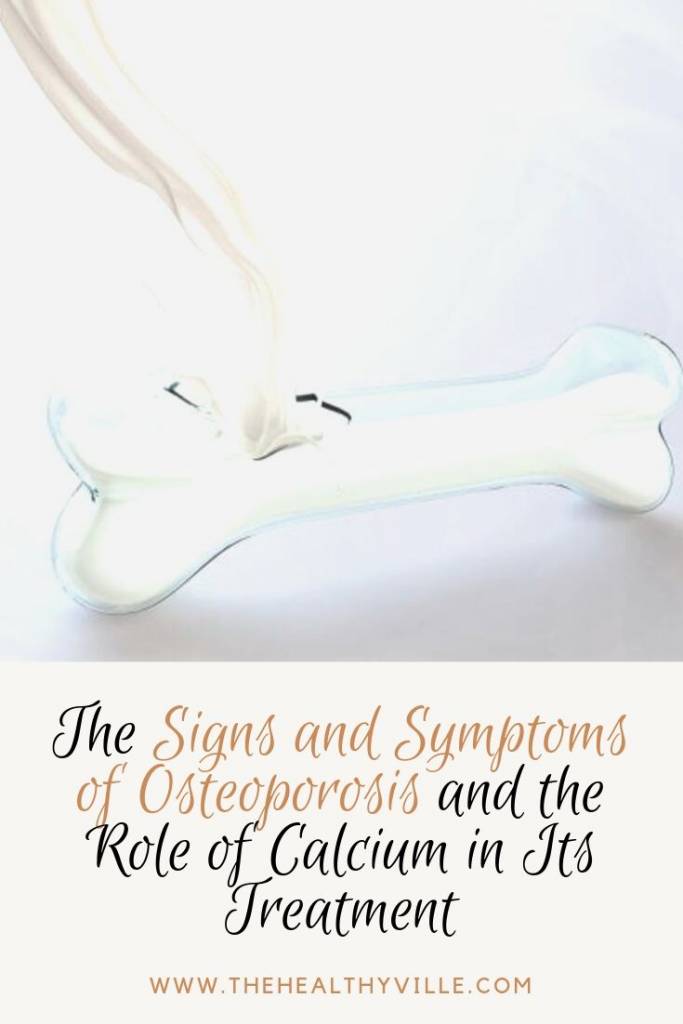Know the signs and symptoms of osteoporosis and learn the importance and the role of the proper intake of calcium in its treatment.
Osteoporosis affects more millions of people and calcium plays a fundamental role in its prevention and treatment. Its appearance implies an increased risk of fractures and calcium plays a fundamental role in its prevention and treatment.
The signs and symptoms of osteoporosis
Osteoporosis is a skeletal disease that occurs with decreased bone density. Although it is a silent pathology, the following signs and symptoms of osteoporosis appear: bone fragility, greater risk of fractures and disability.
Risk populations
From the age of 30, the risk of signs and symptoms of osteoporosis appearing increases as a result of the increase in the amount of calcium that separates from the bone. Thus, after this age, increasing bone density will be impossible and the calcium you consume, in the best case, will only allow us to replace the losses.
Bone density achieved before age 30 will be decisive in the genesis of osteoporosis. From this age, the calcium in the diet will only serve to replace the one that has been lost.
This risk is even greater in post-menopausal women and is due to the associated drop in estrogen levels. Estrogens are a bone lifesaver by stimulating the activity of osteoblasts – cells responsible for building bone – and reducing that of parathormone – a hormone that increases the removal of calcium from the bone.
When estrogen levels fall, the activity of osteoblasts is reduced and that of osteoclasts increases.
Finally, we meet those people who have their intestinal microbiota altered. Intestinal dysbiosis implies an increase in the permeability of the intestine that induces a generalized inflammatory state. Such inflammation increases the activity of osteoclasts. The importance is such that there are many investigations that point to the intestinal microbiota as a new therapeutic target.
Calcium and osteoporosis
Calcium is the most abundant mineral in the human body, it accounts for 2% of total body weight and 99% is in bones and teeth. Its main function is bone mineralization, although it has other important functions such as muscle contraction and nerve transmission. In fact, it is one of the most important minerals in cardiac contraction.
Plasma calcium concentrations should be within a very narrow range. To do this, multiple factors intervene among those that stand out:
Parathormone: increases bone resorption of calcium.
Vitamin D: promotes intestinal calcium absorption.
Vitamin K2: regulates calcium concentrations inside and outside the bones.
Calcium, together with phosphorus, is one of the main constituents of the bone matrix made by osteoblasts. Thus, bone density is directly dependent on calcium levels and, therefore, its lack is indispensable in the genesis of osteoporosis.
What to do to prevent osteoporosis?
At present, it is common to believe that in order to enjoy good bone health, it is enough to ingest enough calcium. However this is not entirely true. To have strong bones, we need: intake, absorption and movement.
Calcium intake against osteoporosis
The recommended calcium intake is 1000-1300 mg of calcium per day. For this, we can resort to:
Dairy products. They are the most important source of calcium in our diet because their calcium is the one that is best absorbed. One serving of milk (a glass of milk, two yogurts or 60 grams of cheese) contains 280 mg of calcium.
Small fish (canned sardines, for example) and vegetable sources (soy, broccoli, Brussels sprouts, chickpeas, figs, almonds and hazelnuts). Its absorption is lower and it is estimated that, at most, we could get 500 mg of calcium per day with a diet pattern that includes these foods.
Supplementation through calcium carbonate or calcium citrate. While the former is cheaper and needs to be consumed with other foods, the latter has a higher cost and can be ingested on an empty stomach. Taking more than 500 mg is not recommendable, as absorption reduces, while the side effects, such as dyspepsia and / or constipation, increase.
Fortified foods, such as vegetable drinks enriched with calcium.
Calcium absorption
The next step would be to ensure the absorption of the calcium we have ingested. In this sense, it is essential to have enough vitamin D. To do this, simply expose yourself to the sun every day for 30 minutes without protection.
If you take foods enriched with vitamin D, remember that it is a fat-soluble vitamin and, therefore, its absorption requires the presence of fat. No to skim milk enriched with vitamin D!
Milk is the main source of calcium. Calcium needs vitamin D to be absorbed. The absorption of vitamin D is dependent on fat and skim milk does not carry fat.
On the opposite side, we find those substances that hinder calcium absorption:
Excess fat.
Fiber.
Phytic acid: cereals, legumes, nuts and seeds.
Oxalic acid: vegetables, fruits and vegetables.
Tannins: spinach, coffee, tea, cocoa, grapes and red wine.
The enormous amount of substances that hinder the absorption of calcium forces us to consume it in greater quantity or separated from the rest of food.
Mechanical stimulus
The last step would be to get a sufficient mechanical stimulus, that is, movement. In this regard, a study published a few days ago by the Journal of Bone and Mineral Research has concluded that high-impact exercises improve bone mineral density of the femoral neck (hip).
Along the same lines, several investigations with tennis players show how the bone density of their dominant arm is 10% higher than that of the opposite arm.
Conclusion
Remember that having adequate calcium levels is essential in the prevention and treatment of osteoporosis. To do this, you need: intake, absorption and movement.
Don’t forget to SHARE the signs and symptoms of osteoporosis with your friends and family on your social networks!

